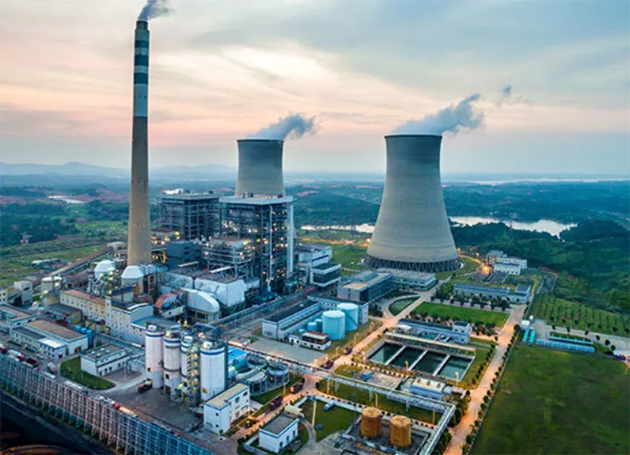By Dhurjati Mukherjee
The year 2024 set a record as the hottest year on Earth, being the first to surpass 1.50°C above pre-industrial levels, impacting 44% of the planet with heat stress. Consequently, the environmental crisis presents significant challenges for nations like India, which must navigate a large population while balancing environmental concerns with development priorities. In the context of the Union Budget 2025-26, the Finance Minister emphasized the country’s commitment to transitioning its energy infrastructure.
Amid this environmental backdrop, Nirmala Sitharaman’s decision to elevate nuclear power capacity to 100GW by 2047 from the current 8GW is an optimistic yet crucial step. Notably, the introduction of small modular reactors (SMRs) will be supported by a Rs 20,000 crore Nuclear Energy Mission, aimed at research and development while allowing private sector participation. Plans are underway to operationalize five domestically developed SMRs by 2033, with an expectation for future expansion. Furthermore, during a recent visit to France, Prime Minister Modi expressed intentions to collaborate on the co-production and co-design of these SMRs.
Anil Kakodkar, the former chairman of the Atomic Energy Commission, has endorsed the Nuclear Energy Mission, stating that reaching 100GW of nuclear power generation by 2047 is essential for India to fulfill its objective of achieving net-zero emissions. Last year, Union Minister of Science and Technology Jitendra Singh informed Parliament that “Nuclear energy plays a crucial role in the country’s energy shift towards net zero as it represents a base-load source of clean electricity available around the clock.” Additionally, the nuclear sector holds substantial potential to provide long-term energy security sustainably.
However, India must also address the discrepancies highlighted by a World Inequality Lab (WIL) report, which states, “The global top 10% are responsible for nearly half of all carbon emissions, while the top 1% emit more than the entire bottom half of the world’s population.” This indicates an absence of balanced or equitable development, which could hinder progress towards Sustainable Development Goals (SDG10) and climate action (SDG13). The per capita emissions of the bottom 50% stand at 1.4 tCO2/person, accounting for 12% of total emissions, while the middle 40% emits 6.1 tCO2/person and the top 10% emits 28.7 tCO2/person, representing 40% and 48% of overall emissions, respectively.
The impact of climate change on tropical and sub-tropical regions has been profound, with anticipated revenue losses exceeding 80% by century’s end. If we consider half of the Global South’s population, their emissions would only constitute approximately 6%, while economic losses might range between 82% to 85%. In contrast, the top half of the global population is responsible for 50% of emissions while only facing about 3% in income losses.
India has committed to reducing emissions by one billion tonnes by 2030, sourcing 50% of its energy from renewables, decreasing emission intensity by 45%, and boosting non-fossil fuel energy to 500GW from 134GW in 2019. Given this context, India has been successful in detaching economic growth from greenhouse gas emissions, achieving a 36% reduction in emission intensity between 2005 and 2020. Furthermore, the country reported that its share of non-fossil fuel sources in total installed electricity generation capacity reached 46.5% by October 2024, with the overall renewable power installed capacity, including large hydropower, hitting 203.2GW. From 2014 to 2024, India’s total installed renewable power capacity (excluding large hydro) expanded 1.5 times, growing from 35GW to 156.25GW.
It is worth noting that, according to IMF projections, India’s emissions are set to rise by 41% by 2030 under existing policies and will continue to increase until 2040, reflecting the rapid development trajectory. Moreover, the costs associated with renewable energy must be further reduced to increase its adoption.
The rise in emissions correlates with unsustainable land use practices, which contribute to 22% of global emissions from agriculture and deforestation. The combination of barren land and elevated temperatures is pushing our planet closer to critical tipping points – with the Amazon rainforest potentially heading towards a tipping point for carbon dioxide conversion, especially along coastlines, which could intensify the impacts of climate-related disasters. Approximately 300 million individuals are at heightened risk for floods and hurricanes due to the degradation of coastal habitats that perform as natural barriers.
Experts have suggested that investing in a sustainable “nature economy” could unleash $10 trillion in business opportunities and create 395 million jobs by 2030. Investing just one dollar in restoring degraded land is estimated to yield economic returns between $7 and $30. Coordinated land actions can also unlock solutions for climate, water safety, pollution, and biodiversity. The land-use sector could account for half of global emission reductions by 2035 while simultaneously reversing deforestation, safeguarding vital habitats, curtailing agricultural emissions, minimizing food waste, restoring damaged ecosystems, and enhancing nature-based solutions.
Despite concerted efforts by many nations, prospects for reducing emission intensity appear quite dim. While renewable energy utilization has indeed grown in India, fossil fuel extraction has not diminished, driven by soaring demands for fossil fuels. The timing and manner for achieving this transition remains uncertain, particularly for emerging economies like India that are on an accelerated development path.
In the future, emissions must be curtailed as their effects pose significant dangers. Notably, extreme heat led to severe weather events that resulted in over 3,200 fatalities in India in 2024, with lightning strikes and thunderstorms causing the highest number of deaths (1,374), followed by floods and heavy rainfall (1,287) and heatwaves (459), according to the IMD’s Annual Climate Summary for 2024. Bihar recorded the most fatalities due to lightning and thunderstorms, while Kerala experienced the highest casualties from floods and heavy rains. Other states, including Uttar Pradesh, Madhya Pradesh, and Maharashtra, were also among the top five that reported significant casualties from extreme weather events last year.
In this context, it is critical to highlight that millions of hectares of grassland and protected areas are being encroached upon due to tourism and commercial activities. Regular deforestation for industrial zones, mining, commercial plantations, and livestock grazing is also prevalent, with an annual loss of 10 million hectares of tree cover. Additionally, while constructing four-lane and six-lane highways might seem like progress, such development strategies are neither economically sound nor environmentally sustainable. Judicious land clearance for infrastructure development, including roads, bridges, highways, railways, and private projects, is essential to prevent environmental degradation, especially when nature conservation is paramount.
The greening of degraded landscapes is of utmost importance, emphasizing plant density, age, and biodiversity. Moreover, a focus on both renewable and nuclear energy could serve as a counterbalance to the alarming levels of emissions that threaten to exacerbate the ongoing environmental crisis.—INFA
(Copyright, India News & Feature Alliance)
New Delhi
17 February 2025


Leave a Reply